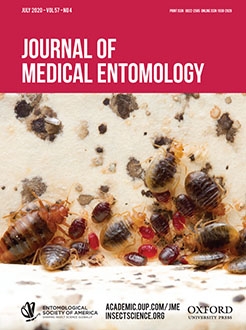Aedes-borne virus disease control relies on insecticides to interrupt transmission. Temephos remains a key chemical for control of immature stage Aedes in Thailand and much of Southeast Asia. However, repeated use of insecticides may result in selection for resistance in vector populations, thus compromising operational intervention. Herein, the phenotypic response to temephos by Aedes aegypti (L.) and Aedes albopictus (Skuse) collected in Thailand and surrounding countries is presented. Data from 345 collection sites are included: 283 from literature review (244 sites with Ae. aegypti, 21 with Ae. albopictus, and 18 having both species sampled), plus 62 locations with Ae. aegypti in Thailand conducted between 2014 and 2018. Susceptibility assays followed WHO guidelines using the recommended discriminating dose of temephos (0.012 mg/liter) against late third to early fourth instar Ae. aegypti. Findings revealed 34 locations with susceptible Ae. aegypti, 13 with suspected resistance, and 15 indicating resistance. Published data between 1999 and 2019 in Thailand found Ae. aegypti resistant in 73 of 206 collection sites, whereas 3 locations from 11 sampled with low-level resistant in Ae. albopictus. From surrounding countries conducting temephos assays (Cambodia, Lao PDR, Myanmar, Malaysia, and Singapore), resistance is present in Ae. aegypti and Ae. albopictus from 27 of 56 and 19 of 28 locations, respectively. Routine insecticide susceptibility monitoring should be an operational requirement in vector control programs. Given the wide distribution and apparent increase in temephos-resistance, alternative larvicidal compounds must be considered if chemical control is to remain a viable vector control strategy.
How to translate text using browser tools
11 March 2020
Susceptibility of Aedes aegypti and Aedes albopictus (Diptera: Culicidae) to Temephos in Thailand and Surrounding Countries
Manop Saeung,
Ratchadawan Ngoen-Klan,
Kanutcharee Thanispong,
Vithee Muenworn,
Michael J. Bangs,
Theeraphap Chareonviriyaphap
ACCESS THE FULL ARTICLE
It is not available for individual sale.
This article is only available to subscribers.
It is not available for individual sale.
It is not available for individual sale.

Journal of Medical Entomology
Vol. 57 • No. 4
July 2020
Vol. 57 • No. 4
July 2020
Aedes aegypti
Aedes albopictus
resistance
temephos susceptibility
Thailand




